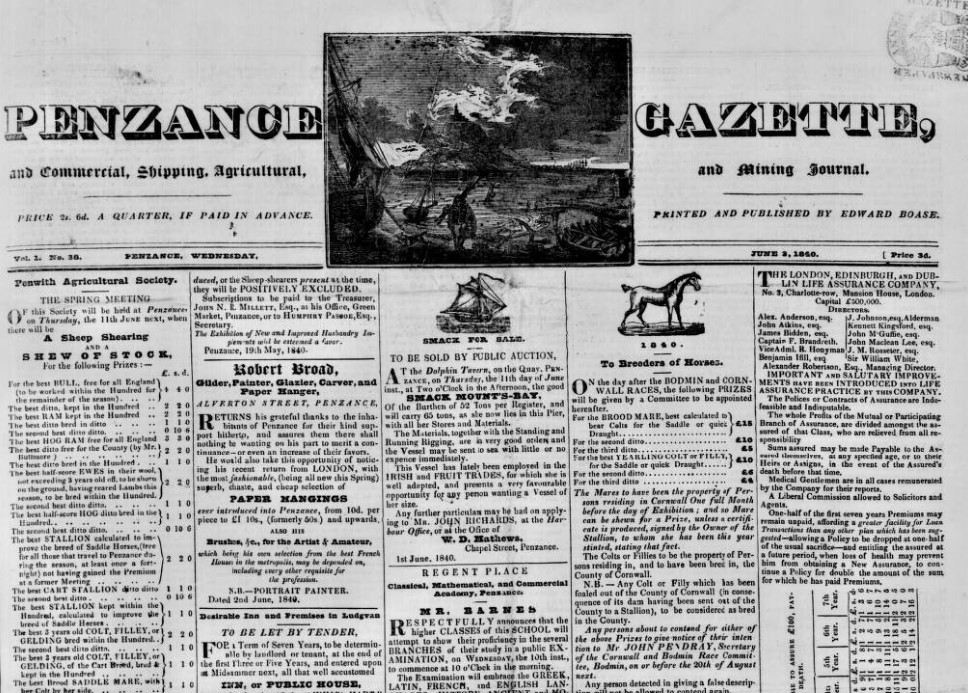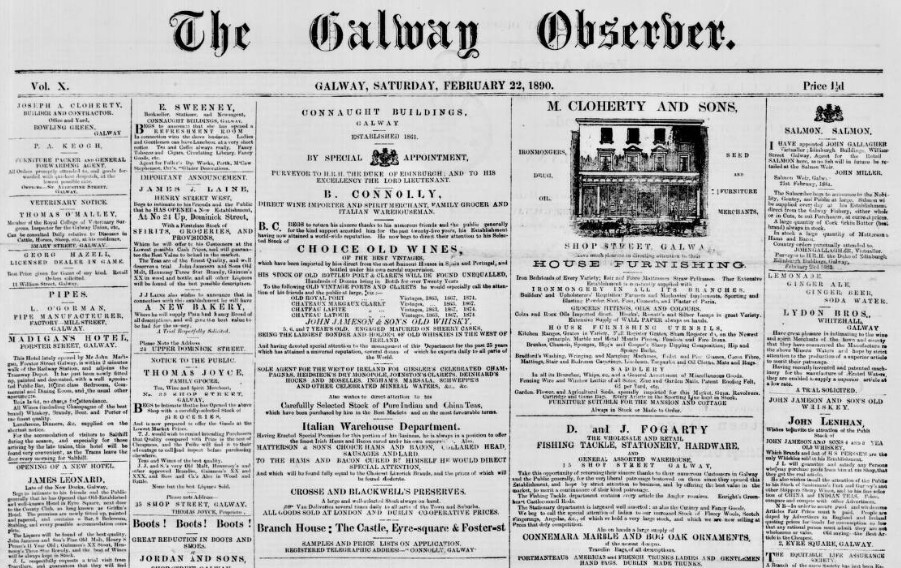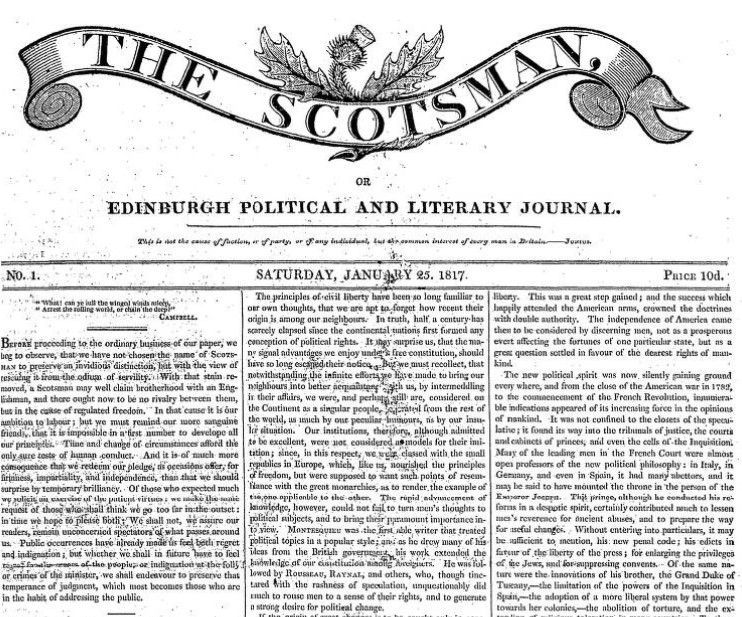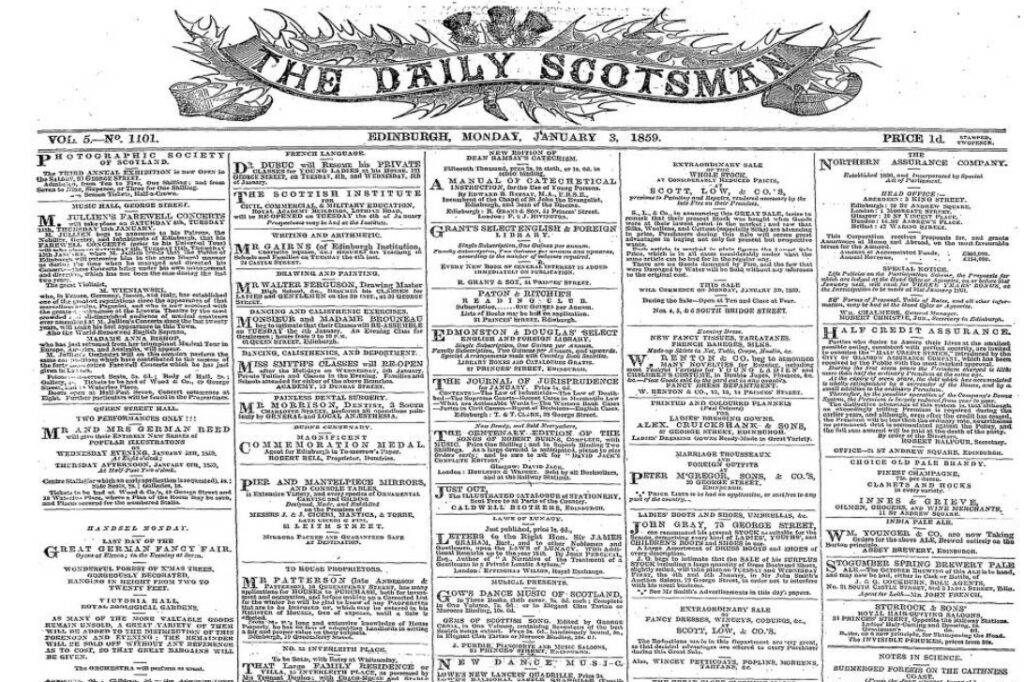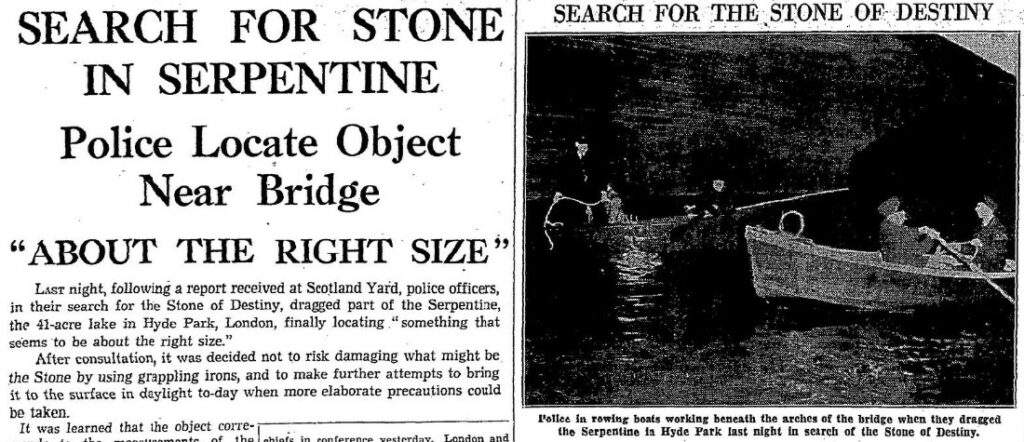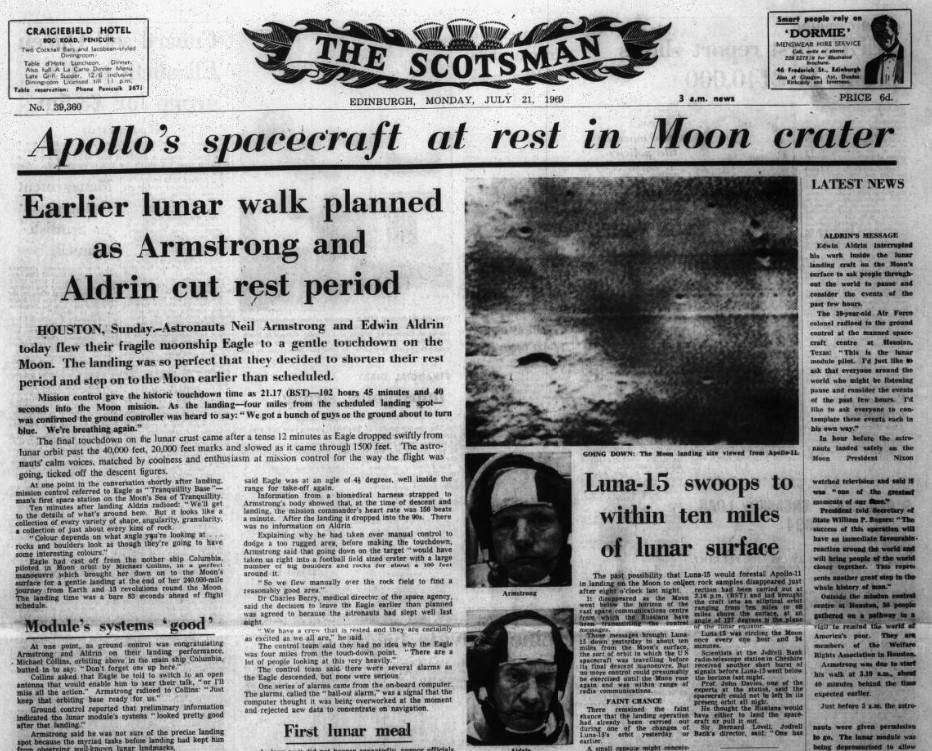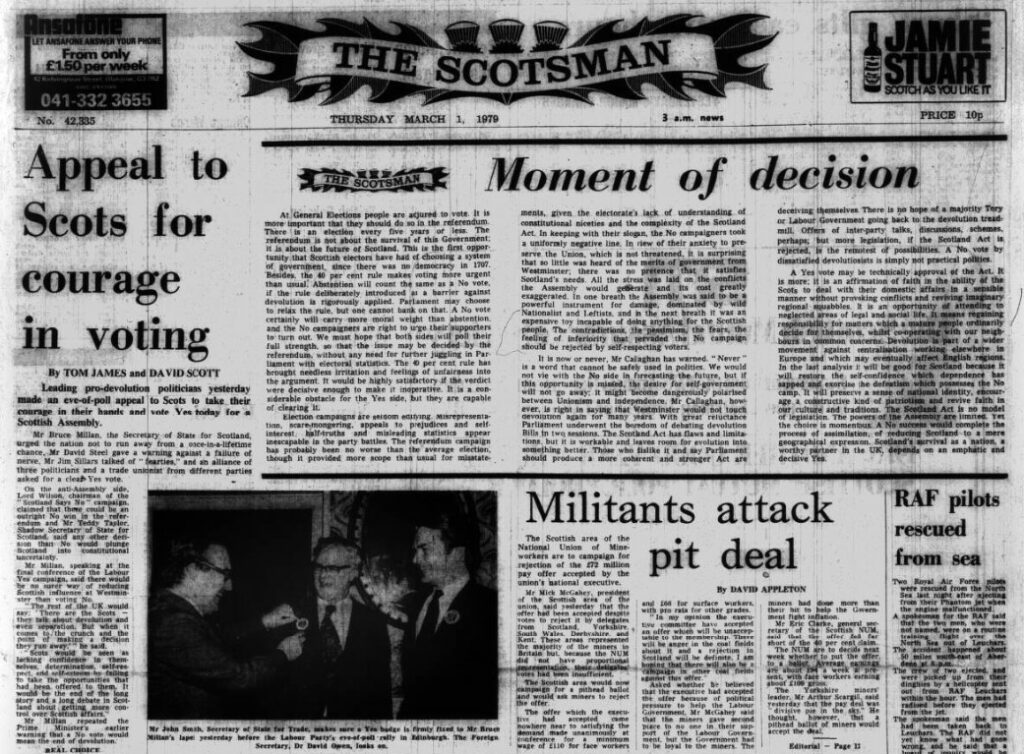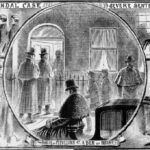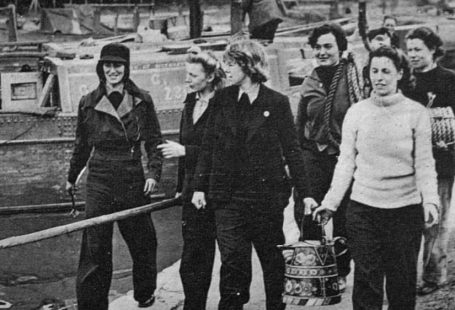This week at The Archive is a Scotsman special as we have added over 400,000 brand new pages to this seminal Scottish newspaper, spanning the years 1951 to 2002. We are delighted, furthermore, to announce the extension of our partnership with The Scotsman publishers National World, which will see many millions of new pages join our collection in the months and years to come.
And that’s not all this week. Overall, we have added 572,692 brand new pages to our collection over the last seven days, with two new titles joining us from Cornwall and Ireland. Meanwhile, we’ve also updated 35 of our existing titles from across England, Scotland and Ireland.
So read on to discover more about all of our new and updated titles of the week, and to celebrate our Scotsman special, we look back at some of the newspaper’s defining moments of the latter half of the twentieth century.
Register now and explore the Archive
The first of our duo of new titles this week hails from Cornwall and is the Penzance Gazette. This politically neutral title was founded in 1839 as the Penzance Gazette and Commercial, Shipping, Agricultural and Mining Journal, with a beautiful masthead depicting a coastal scene. Published in the Cornish town and port of Penzance every Wednesday, the newspaper cost two and a half pence, and filled four pages.
Unsurprisingly, given the publication’s coastal ties, the Penzance Gazette had an emphasis on shipping news, whilst also publishing ‘Notices to Mariners’ and the Falmouth Packet List, alongside national news and tidings from further afield. The newspaper, meanwhile, printed the latest from Devon and Cornwall, whilst providing ‘sketches of Cornish history,’ and notices of births, marriages and deaths.
Packing a lot into its four pages, the Penzance Gazette also published poetry, summaries of ‘accidents,’ and ‘opinions from the London press.’
The second of our new titles this week is the Galway Observer, which was first published in Galway, the county town of County Galway, in 1883. By 1891 this Nationalist title was said to have ‘a most extensive circulation in Counties Galway, Clare, Mayo, and Roscommon among farmers and commercial men.’ It meanwhile claimed to be the ‘leading organ’ of Galway itself, exercising ‘very great influence in dealing with local matters.’
Appearing every Saturday at the cost of two pence, the Galway Observer filled four pages and dealt with local politics, and reported on trials and legal sessions in the area. The title also published poetry, and a ‘London letter,’ and appeared well into the twentieth century.
That may be it from our two new titles of the week, but we’ve got a bumper crop of updated titles for you this week, even aside from our Scotsman special. We’ve added over 50,000 brand new pages to the London Daily Chronicle, which was developed out of local title the Clerkenwell News and Domestic Intelligencer. Running from 1872 onwards, the London Daily Chronicle merged with the Daily News in 1930 to become the News Chronicle.
Meanwhile, we’ve updated more of our titles from the Republic of Ireland, with new years joining the Kerry Evening Star, Limerick’s Bassett’s Chronicle and the Wexford Constitution. We’ve also added more pages to newspapers from Northern Ireland, with new years joining both the Ulster Echo and the Tyrone Courier. Alongside our Scotsman special, we’ve also added new pages to fellow National World and Scottish title the Edinburgh Evening News.
A Scotsman Special
With a reputation for journalistic excellence, The Scotsman was first published on 25 January 1817, the result of a partnership between solicitor William Ritchie and customs officer Charles Maclaren. Ritchie, in particular, had concerns over the mismanagement of Edinburgh’s new Royal Infirmary, and wanted a new, independent, publication to express his concerns. The Scotsman, with its thistle masthead, was born, and this bold new publishing voice promised to offer ‘firmness, impartiality and independence.’
Initially printed on a weekly basis, following the abolition of the newspaper stamp duty, in 1855 the The Scotsman became a daily newspaper. The abolition of the stamp duty also meant that The Scotsman got cheaper, dropping in price to just one penny in the same year.
Moving into the twentieth century, The Scotsman continued to report on important news events ‘without fear or favour.’ Following the removal of the Stone of Destiny from Westminster Abbey in 1950, which rekindled the debate on Scotland’s constitutional settlement, The Scotsman would go on to play an important role in discussions over the country’s future.
Meanwhile, the newspaper reported on ground breaking national and international events. In 1952 The Scotsman reported on the beginning of television broadcasting in Scotland, whilst on 21 July 1969 the newspaper detailed the moon landings.
The publication continued to play a key part as an organ for the debate over how Scotland should be governed. On 1 March 1979 The Scotsman reported on the referendum for Scottish devolution. Despite the majority voting in favour for devolution, because the turn out was not great enough amongst the electorate, devolution was not then introduced.
To mark the 175th anniversary of The Scotsman, in January 1992, the newspaper organised a special debate on Scotland’s future. Continuing to showcase the publication’s liberal spirit, and its founding principles of reporting on the news with impartiality, The Scotsman put together a panel of Scottish politicians Malcom Bruce, Donald Dewar, Ian Lang and Alex Salmond, which was chaired by broadcaster Kirsty Wark. Dubbed a ‘Great Debate,’ this panel brought ‘excitement back to the hustings.’ Such discussions and forums ultimately helped to contribute to the vote for devolution in 1997, and the formation of the Scottish Parliament in 1999.
The Scotsman was again at the forefront of international journalism in 1995, when on 8 March 1995 it marked International Women’s Day by rebranding as The Scotswoman. This was the idea of Lesley Riddoch, then the only woman serving on the paper’s editorial board, and this change hit the headlines around the world. Indeed, The Scotswoman, published on 8 March 1995, became the highest selling edition of the newspaper in the 1990s.
We’re delighted to now have over 400,000 brand new pages of The Scotsman available for you to search and browse, spanning the years 1951 to 2002. We now have a full run of the newspaper too, from its very first edition, published on 25 January 1817, all the way up until the twenty-first century.
New Titles
| Title | Years Added |
| Galway Observer | 1882-1884, 1889-1911, 1928-1963 |
| Penzance Gazette | 1839-1858 |
Updated Titles
This week we have updated 35 of our existing titles.
You can learn more about each of the titles we add to every week by clicking on their names. On each paper’s title page, you can read a FREE sample issue, learn more about our current holdings, and our plans for digitisation.
You can keep up to date with all the latest additions by visiting the recently added page. You can even look ahead to see what we’re going to add tomorrow.


